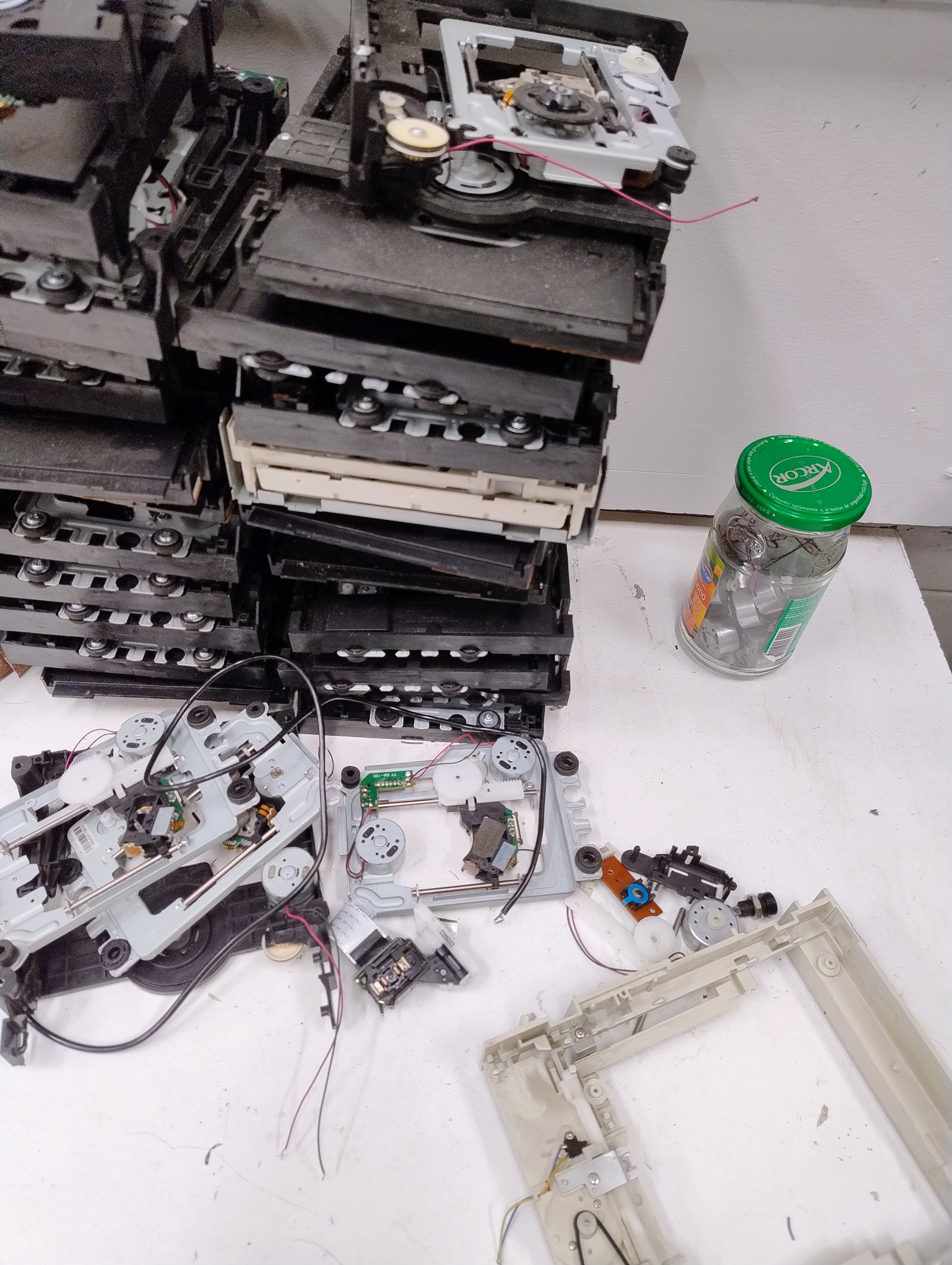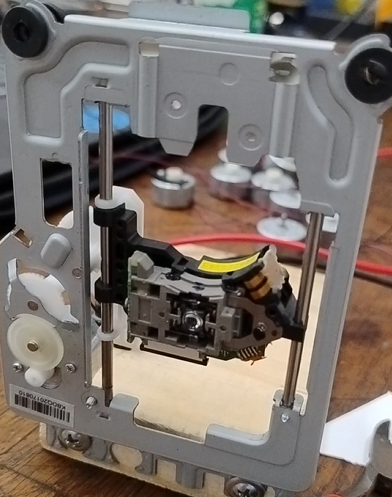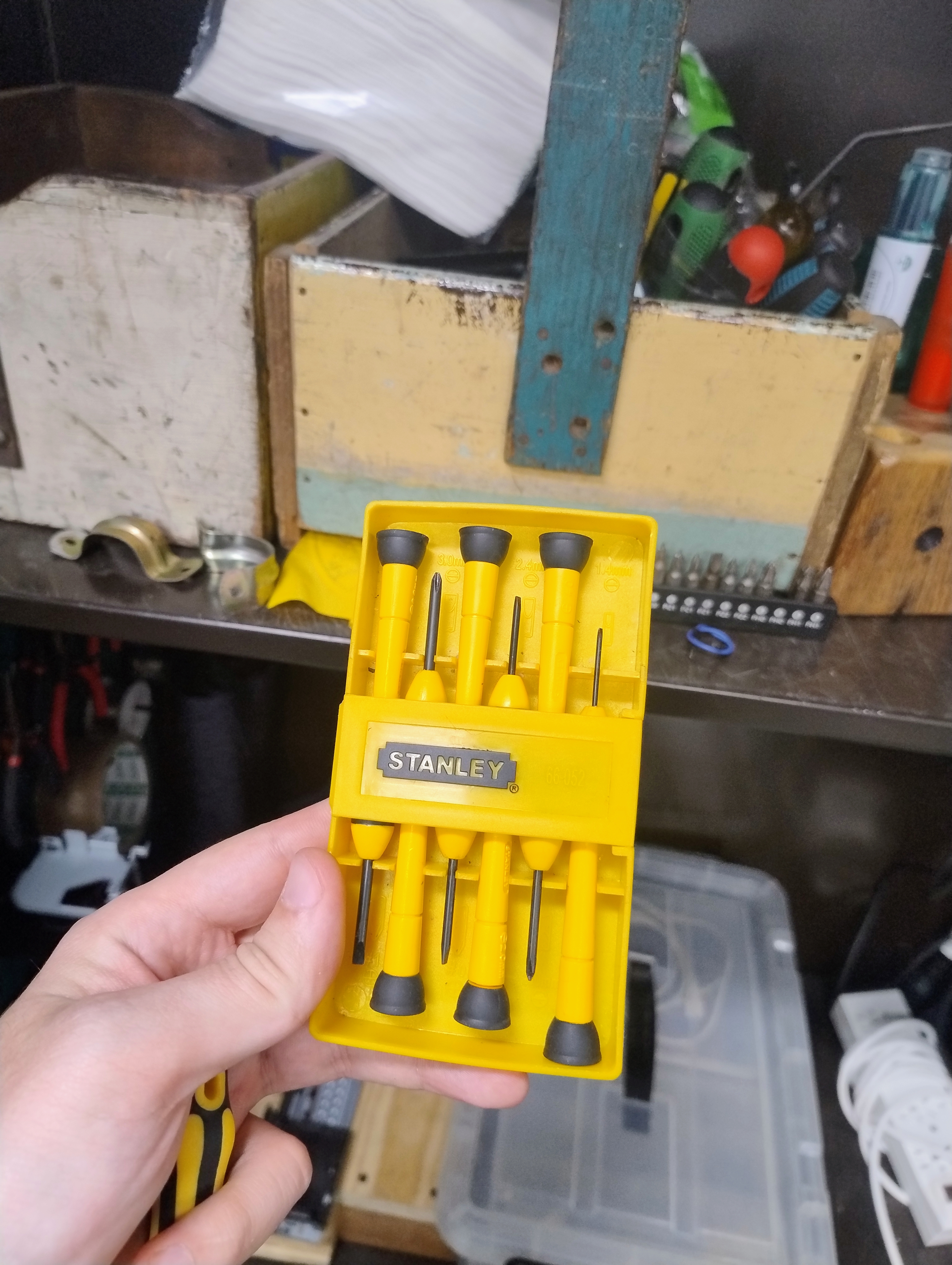Herramientas que uso para reciclar motores electrónicos // Tools I use to recycle electronic motors
¡Hola compañeros de Hive! ¿Cómo están?
Hoy les voy a mostrar el segundo día de mi emocionante 2do día de reciclaje de componentes electrónicos. En esta ocasión, nos vamos a enfocar en los motores de corriente continua (CC), esas pequeñas maravillas que podemos encontrar en dispositivos antiguos como disqueteras y compacteras de CD.
Como podrán ver en la siguiente imagen, tengo una gran cantidad de compacteras y unidades de disquetes antiguas, esperando ser desarmadas(o tiradas a la basura) para extraerles los valiosos motores de corriente continua (CC). Estos pequeños motores, que han funcionado a la perfección durante más de 20 años, están listos para ser reutilizados en nuestros proyectos electrónicos.

Cada una de estas compacteras y unidades de disquetes representa una mina de oro para los entusiastas de la electrónica. Estos dispositivos, aunque ya no cumplen su función original, contienen componentes que todavía tienen mucho que ofrecer.
Los motores de CC, en particular, son extremadamente útiles y pueden ser la base de muchas creaciones innovadoras.

Desarmar estos dispositivos no solo es un ejercicio de destreza manual, sino también una oportunidad de aprender y comprender mejor cómo funcionan internamente. Con cada tornillo que retiramos y cada motor que extraemos, adquirimos un conocimiento valioso y, al mismo tiempo, contribuimos al reciclaje responsable de componentes electrónicos.

Para aquellos que se dedican al reciclaje de componentes electrónicos, contar con las herramientas adecuadas es esencial para desarmar dispositivos de manera eficiente y segura. Yo tengo este juego de destornilladores que ven a continuación y para reparaciones simples me funciono muy bien.

Este juego que tengo tiene puntas planas que son perfectas para abrir carcasas y acceder a componentes internos, mientras que las puntas de estrella (Phillips) son imprescindibles para manejar los tornillos más comunes en dispositivos electrónicos. Este conjunto no solo facilita el proceso de desmontaje, sino que también ayuda a minimizar el riesgo de dañar los componentes reutilizables.
En mi experiencia personal y docente, reciclar componentes electrónicos se ha convertido en una parte esencial de mis proyectos en la escuela técnica. Mis alumnos disfrutan enormemente reciclando, reutilizando y desarmando estos componentes, encontrando en estas actividades una fuente de aprendizaje práctico y motivador.
Para estos proyectos educativos, abordamos una amplia gama de actividades técnicas. Por ejemplo, utilizamos programación para controlar motores, permitiendo a los estudiantes comprender cómo se puede manipular el hardware a través del software. Este tipo de proyecto no solo les enseña los fundamentos de la programación y la electrónica, sino que también les proporciona una visión práctica de cómo se diseñan y funcionan los sistemas automatizados.
Además, diseñamos PCBs (placas de circuito impreso), una habilidad esencial para cualquier técnico o ingeniero electrónico. Los alumnos aprenden a usar software especializado para crear sus propios diseños de circuitos, lo que les da una comprensión profunda de cómo se conectan y funcionan los componentes electrónicos. Este proceso incluye desde la conceptualización del diseño hasta la fabricación y prueba del PCB, brindando una experiencia completa en el ciclo de desarrollo de hardware.
También trabajamos con protoboards, una herramienta invaluable para el diseño y prueba de circuitos electrónicos sin la necesidad de soldadura. Los estudiantes pueden experimentar reutilizando estos componentes y también ahorrando en la compra de estos componentes que no son nada baratos en argentina por lo menos.
Estas actividades no solo desarrollan las habilidades técnicas de los estudiantes, sino que también fomentan el trabajo en equipo, la resolución de problemas y la creatividad. Reciclar componentes electrónicos y reutilizarlos en nuevos proyectos les enseña a valorar la sostenibilidad y el aprovechamiento de recursos, preparando a mis alumnos para enfrentar desafíos tecnológicos y medioambientales con ingenio y responsabilidad.
Espero les haya gustado este post compañeros de hive , cualquier duda o consulta sobre el tema estoy a disposición y muy pronto subiré mas trabajos prácticos realizados por mis alumnos y tutoriales sobre estos temas de ciencia , tecnología y electrónica.
Un saludo desde Argentina para todos.
......................................................................
Hello fellow Hive! How are they?
Today I am going to show you the second day of my exciting 2nd day of recycling electronic components. On this occasion, we are going to focus on direct current (DC) motors, those little wonders that we can find in old devices such as floppy drives and CD players.
As you can see in the following image, I have a large number of old compact discs and floppy drives, waiting to be disassembled (or thrown in the trash) to remove the valuable direct current (DC) motors. These small motors, which have worked perfectly for over 20 years, are ready to be reused in our electronic projects.

Each of these compact and floppy drives represents a gold mine for electronics enthusiasts. These devices, although they no longer fulfill their original function, contain components that still have a lot to offer.
DC motors, in particular, are extremely useful and can be the basis for many innovative creations.

Taking these devices apart is not only an exercise in manual dexterity, but also an opportunity to learn and better understand how they work internally. With every screw we remove and every motor we remove, we gain valuable knowledge and, at the same time, contribute to the responsible recycling of electronic components.

For those involved in recycling electronic components, having the right tools is essential to disassemble devices efficiently and safely. I have this set of screwdrivers that you see below and for simple repairs they work very well.

This set I have has flat tips that are perfect for opening cases and accessing internal components, while the star (Phillips) tips are essential for handling the most common screws on electronic devices. This assembly not only makes the disassembly process easier, but also helps minimize the risk of damaging reusable components.
In my personal and teaching experience, recycling electronic components has become an essential part of my projects in technical school. My students greatly enjoy recycling, reusing and disassembling these components, finding in these activities a source of practical and motivating learning.
For these educational projects, we address a wide range of technical activities. For example, we use programming to control motors, allowing students to understand how hardware can be manipulated through software. This type of project not only teaches them the fundamentals of programming and electronics, but also provides them with a practical insight into how automated systems are designed and operate.
Additionally, we design PCBs (printed circuit boards), an essential skill for any electronic technician or engineer. Students learn to use specialized software to create their own circuit designs, giving them a deep understanding of how electronic components connect and function. This process includes everything from design conceptualization to PCB manufacturing and testing, providing a complete experience in the hardware development cycle.
We also work with breadboards, an invaluable tool for designing and testing electronic circuits without the need for soldering. Students can experiment by reusing these components and also saving on the purchase of these components, which are not cheap in Argentina at least.
These activities not only develop students' technical skills, but also encourage teamwork, problem solving, and creativity. Recycling electronic components and reusing them in new projects teaches them to value sustainability and the use of resources, preparing my students to face technological and environmental challenges with ingenuity and responsibility.
I hope you liked this post hive colleagues, any questions or queries on the subject I am available and very soon I will upload more practical work done by my students and tutorials on these topics of science, technology and electronics.
Greetings from Argentina to everyone.
Congratulations @tecnotronics! You have completed the following achievement on the Hive blockchain And have been rewarded with New badge(s)
Your next target is to reach 2000 upvotes.
You can view your badges on your board and compare yourself to others in the Ranking
If you no longer want to receive notifications, reply to this comment with the word
STOPCheck out our last posts:
Thanks for your contribution to the STEMsocial community. Feel free to join us on discord to get to know the rest of us!
Please consider delegating to the @stemsocial account (85% of the curation rewards are returned).
You may also include @stemsocial as a beneficiary of the rewards of this post to get a stronger support.